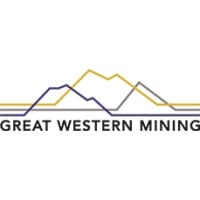Investors are finding themselves drawn to gold, enticed not by dramatic headlines but by the subtle tension in Washington’s fiscal narrative and the anticipation surrounding this week’s jobs data. The mood in markets has turned watchful, with attention shifting to the expanding U.S. deficit and a looming tariff deadline, which together have begun to gently tilt sentiment in favour of haven assets.
Spot gold inched higher midweek, trading in the range of $3,340 to $3,350 per ounce, reflecting a modest gain. It wasn’t a sudden move but a measured one, grounded in the growing unease around fiscal imbalances. A proposed $3.3 trillion increase to the U.S. deficit, tied to fresh tax and spending legislation, has begun to reshape risk perceptions. Meanwhile, investors are factoring in the potential inflationary impact of tariffs, with a critical July 9 decision date drawing near.
What stands out is not the scale of gold’s movement but its resilience. The metal continues to attract quiet demand despite the backdrop of elevated Treasury yields. That firmness hints at something deeper: a market that sees beyond the short-term fluctuations and is starting to price in a longer arc of fiscal strain and policy inflection.
Contributing to this cautious tone is the latest employment data. A sharper-than-expected drop in private payrolls during June, marking the first monthly decline since early last year, has subtly reinforced the view that the labour market may be softening. Traders are now looking ahead to the official non-farm payroll report with renewed interest, sensing that a weaker figure could accelerate the case for a shift in Federal Reserve policy.
While the Fed remains non-committal, expectations are building that rate cuts could arrive sooner than previously thought. Yet the central bank appears content to wait for clearer signs, particularly given the uncertainty around tariffs and their downstream impact on prices. In this environment, gold is quietly benefitting from both sides of the equation: the prospect of easier monetary policy and the uncertainty that keeps risk appetite in check.
There is also a technical dimension at play. Gold is currently hovering near a key pivot level, and momentum watchers are closely monitoring whether it can establish a firmer base. If Thursday’s payroll data underwhelms, it could provide the catalyst for a breakout toward the $3,358 level or beyond, potentially reawakening broader interest in the metal.
For investors, this is not a market to chase, but one to understand. Gold’s current posture is a reflection of shifting fundamentals, rising sovereign debt, weaker employment signals, and a policy landscape in flux. These elements are not just temporary noise; they represent a broader recalibration of risk that may continue to unfold over the coming months.
Gold is once again assuming its familiar role: not as a speculative play, but as a strategic counterbalance in portfolios increasingly exposed to fiscal and macroeconomic ambiguity. For those managing long-term allocations, this quiet ascent may signal something more durable than it appears.
Great Western Mining Corporation Plc (LON:GWMO) is a mineral exploration and development company, incorporated in Ireland with operations in the USA.










































